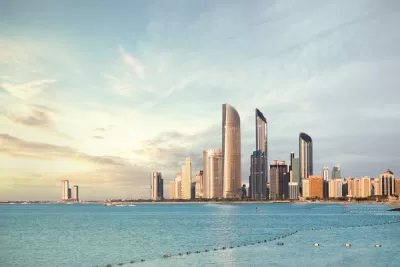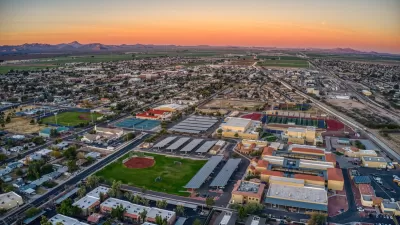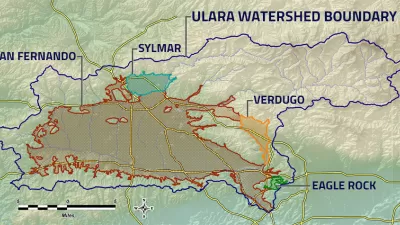The UAE has created a storage facility under the desert that can provide up to 100 million liters per day in the event of an emergency.

From the 2018 International Water Summit in Abu Dhabi, Akshat Rathi reports that underneath the desert, far from the desalination plants, there is now a very prudent reserve of 26 billion liters of water available for the United Arab Emirates in a crisis. Like many of the projects funded by the massive oil wealth of the UAE, it is an impressive feat of engineering.
“The desalinated water is transported through large pipes (about 1 meter in diameter), which had to be pieced together in the desert through high-precision welding to make them leak-proof for at least 50 years. The water is then dumped about 80 meters underground through perforated pipes, where it seeps deeper into the aquifer. There are about 300 wells to recharge, recover, and observe the aquifer’s water.”
Despite its arid climate, the UAE has one of the highest rates of per capita water consumption in the world; as a result of its arid climate, it is particularly vulnerable to climate change. It was the potential impact of climate change that inspired the reserve.
The project is likely to draw a great deal of interest, but the expense makes it of limited use to the rest of the world. Even in the United States, officials tend to balk at just the cost of desalination, let alone the cost of moving and storing the water underground. And the U.S. is in better financial shape than many of the world’s more arid nations.
“For most others facing water scarcity,” Rathi writes, “there’s no oil money to help.”
FULL STORY: The UAE has built the world’s largest desalinated water reserve—under a desert

Trump Administration Could Effectively End Housing Voucher Program
Federal officials are eyeing major cuts to the Section 8 program that helps millions of low-income households pay rent.

Planetizen Federal Action Tracker
A weekly monitor of how Trump’s orders and actions are impacting planners and planning in America.

Ken Jennings Launches Transit Web Series
The Jeopardy champ wants you to ride public transit.

Washington Legislature Passes Rent Increase Cap
A bill that caps rent increases at 7 percent plus inflation is headed to the governor’s desk.

From Planning to Action: How LA County Is Rethinking Climate Resilience
Chief Sustainability Officer Rita Kampalath outlines the County’s shift from planning to implementation in its climate resilience efforts, emphasizing cross-departmental coordination, updated recovery strategies, and the need for flexible funding.

New Mexico Aging Department Commits to Helping Seniors Age ‘In Place’ and ‘Autonomously’ in New Draft Plan
As New Mexico’s population of seniors continues to grow, the state’s aging department is proposing expanded initiatives to help seniors maintain their autonomy while also supporting family caregivers.
Urban Design for Planners 1: Software Tools
This six-course series explores essential urban design concepts using open source software and equips planners with the tools they need to participate fully in the urban design process.
Planning for Universal Design
Learn the tools for implementing Universal Design in planning regulations.
Heyer Gruel & Associates PA
Ada County Highway District
Institute for Housing and Urban Development Studies (IHS)
City of Grandview
Harvard GSD Executive Education
Toledo-Lucas County Plan Commissions
Salt Lake City
NYU Wagner Graduate School of Public Service





























